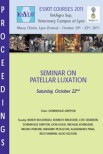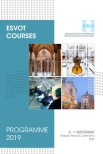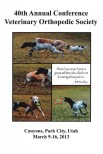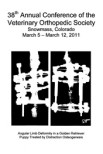OBJECTIVE:
To compare the ultimate tensile strength (UTS) and load to 1 and 3 mm gap formation of smooth (3-metric) and knotless barbed (4-metric) polypropylene sutures placed in a three-loop pulley pattern for canine gastrocnemius tendon repair.
STUDY DESIGN:
In vitro.
SAMPLE SIZE:
Thirty-three paired bone-tendon units with one of each pair assigned to each suture type. Barbed suture size was based on previously published materials testing results.
METHODS:
Each unit was placed in a servo-hydraulic testing machine and tested under single cycle tensile loading until repair failure.
RESULTS:
There was a significantly higher UTS for smooth polypropylene compared to the barbed polypropylene repairs. The loads resulting in 1 and 3 mm gaps for the barbed repairs were consistently significantly less than the corresponding smooth polypropylene repair values.
CONCLUSION:
The knotted smooth polypropylene repair was consistently stronger than the knotless barbed polypropylene repair when placed in a three-loop pulley pattern for gastrocnemius repair.
CLINICAL SIGNIFICANCE:
Knotless barbed polypropylene suture should not be considered equivalent to knotted smooth polypropylene of comparable tensile strength when placed in a three-loop pulley pattern for canine gastrocnemius tendon repair. The low failure loads of the barbed repair are probably due to failure of the barbs to anchor consistently throughout the tendon in the knotless configuration.









